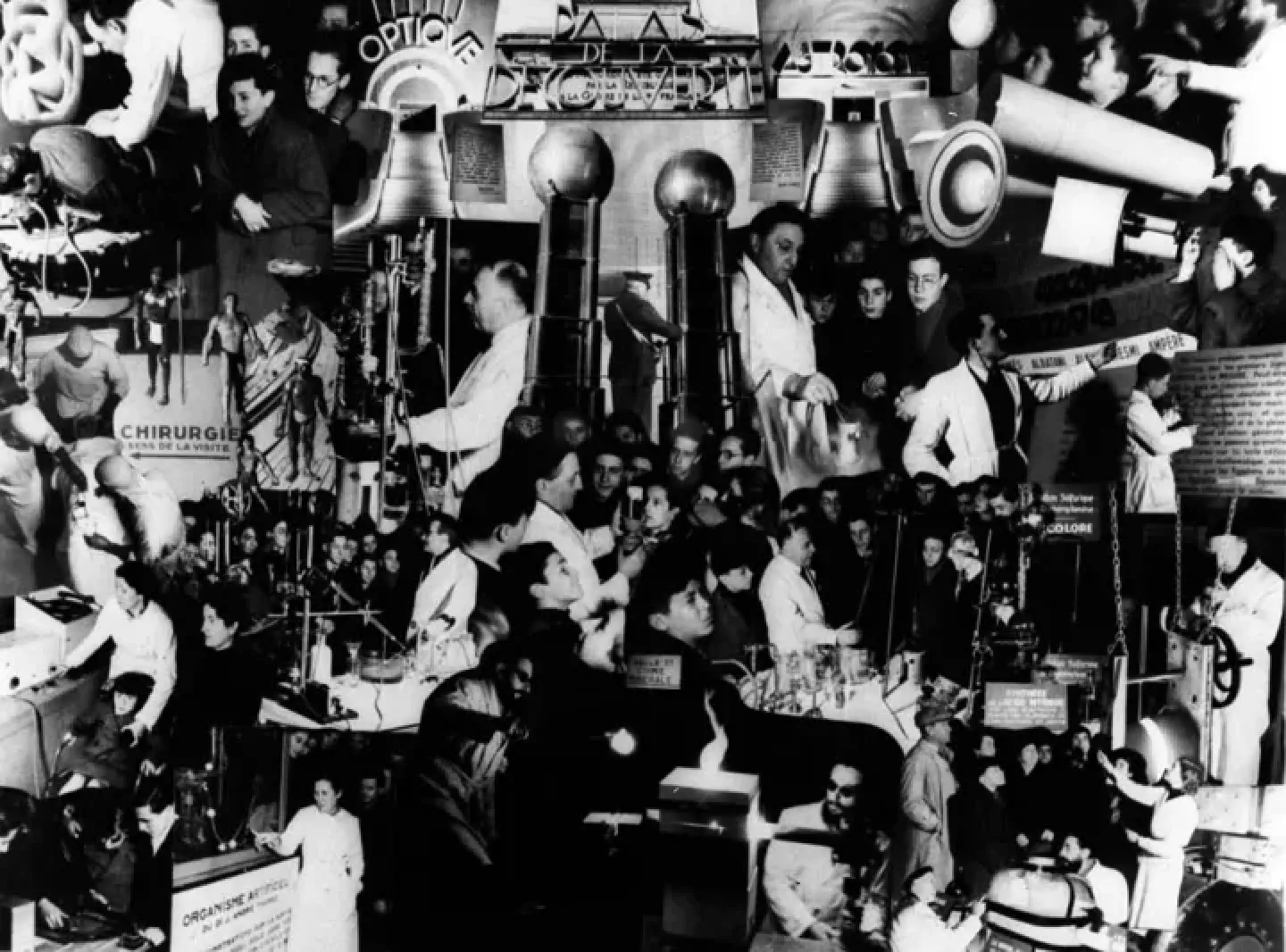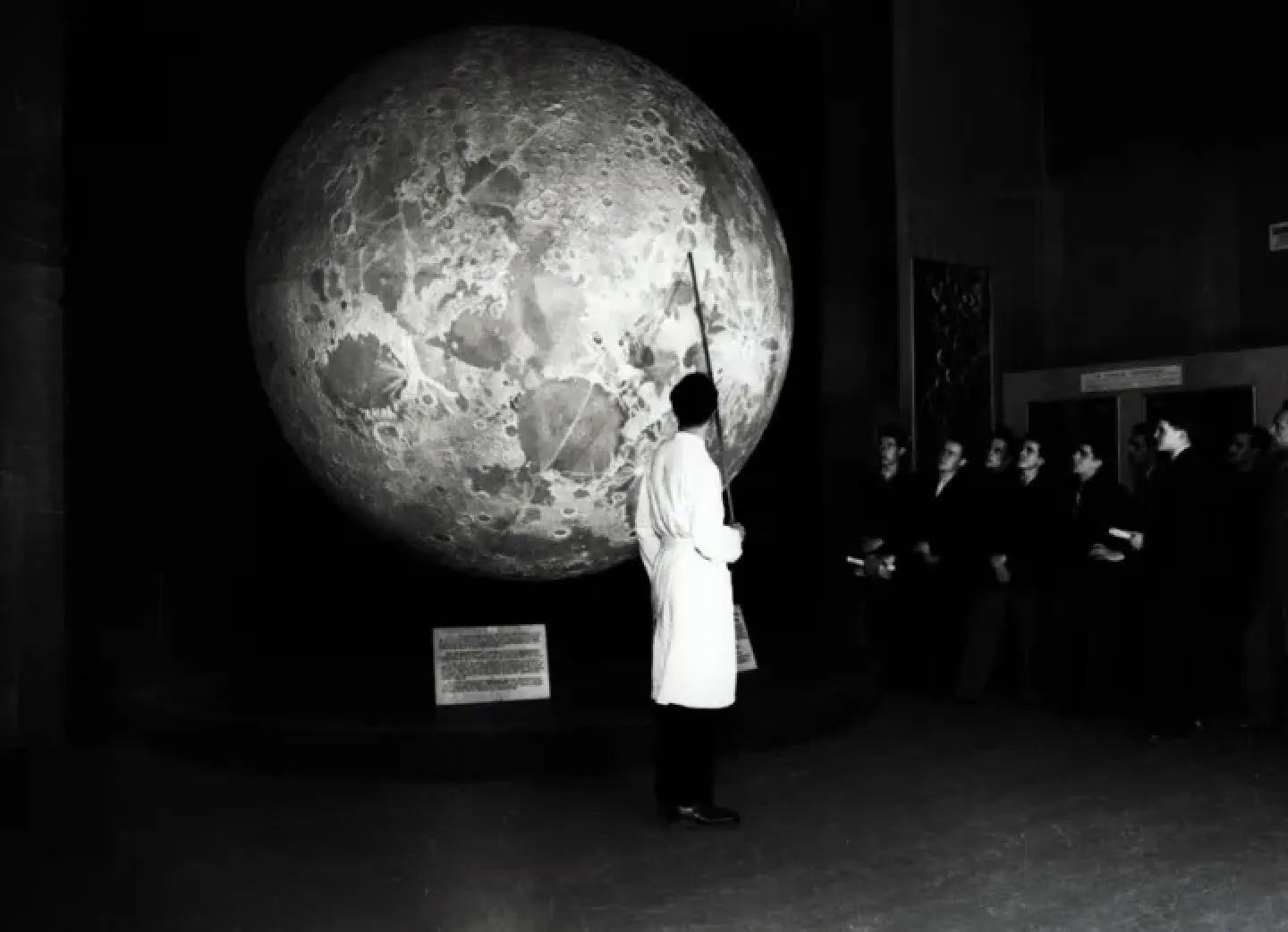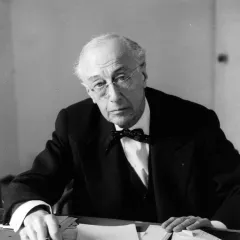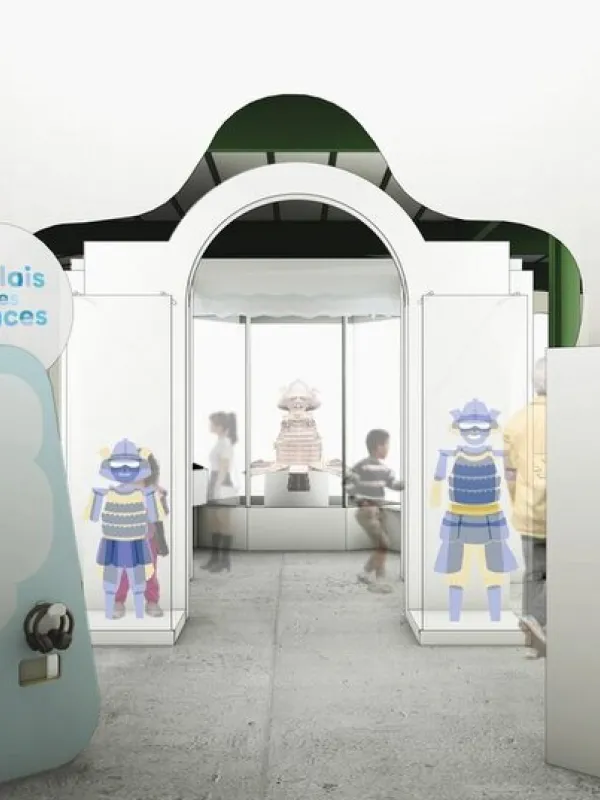A unique museum is born
The Palais de la Découverte adventure began in 1937. It started out as a temporary exhibition, part of the International Exhibition dedicated to arts and techniques in modern life, held in Paris. It was an immediate and unanimous success, attracting more than two million visitors in six months! The Palais de la Découverte was born. The following year, it became a permanent museum.

An advertisement for the Palais de la Découverte from 1937.
Scientific culture as a vehicle for emancipation
Behind its creation lay an idea that had been brewing for several years in the minds of French intellectuals and leading scientists: a national science museum.
At a time of profound social and political upheaval in France and Europe, they rallied around values based on reason and the social role of culture and science as a vehicle for emancipation and peace.
We wanted to encourage the public to develop a taste for scientific culture, as well as the qualities of precision, integrity and freedom of judgement that this culture develops and which are useful and valuable to everyone, regardless of their career.

Official visit to the Palais de la Découverte on 21 July 1937 by the French President, Albert Lebrun. Charles Victor Mauguin (left), head of crystallography, presents a model of a piece of cooking salt magnified 400 million times, in the presence of Jean Perrin (right).
Showing science in action
Two key figures were particularly influential in the founding of the Palais. Jean Perrin, winner of the Nobel Prize in Physics in 1926 and a member of the Popular Front government, took up the project first envisioned by André Léveillé. He turned this ambition into reality and created a science centre that is unique in the world, designed to popularise fundamental research and its methods among as wide an audience as possible by showing “science in action”, to use an expression dear to him.
This educational approach was reflected in spectacular installations, such as the gigantic electrostatic machine, and a wide range of experiments conducted by “demonstrators”.
In 1938, the museum featured displays on mathematics, astronomy, physics, chemistry, biology and medicine. The public could watch nearly 400 live experiments, just as they would be conducted in a laboratory.

A demonstrator gives a talk on astronomy to a group of students in the Moon Room.
The founders
Two main groups worked together to create the Palais de la Découverte: leading scientists, both men and women, and museum professionals. Jean Perrin and André Léveillé were the two most prominent representatives and contributors.
The Palais expands
The Palais de la Découverte became a permanent museum in 1938, featuring displays on mathematics, astronomy, physics, chemistry, biology and medicine. The public could watch nearly 400 live experiments, just as they would be conducted in a laboratory. It was a successful venture for Jean Perrin, who wanted to showcase “the extraordinary progress of science” and its decisive role in civilisation.
Over the years, the Palais expanded its offering. Its reputation was built on its spectacular demonstrations, while temporary exhibitions complemented the experiments and showcased scientific advances. The planetarium, a major feature of the International Exhibition, was installed in the entrance hall of the Palais in 1952. Subsequently, conferences, publications, the magazine Découverte, online content such as podcasts and new spaces have been offered to the public.




